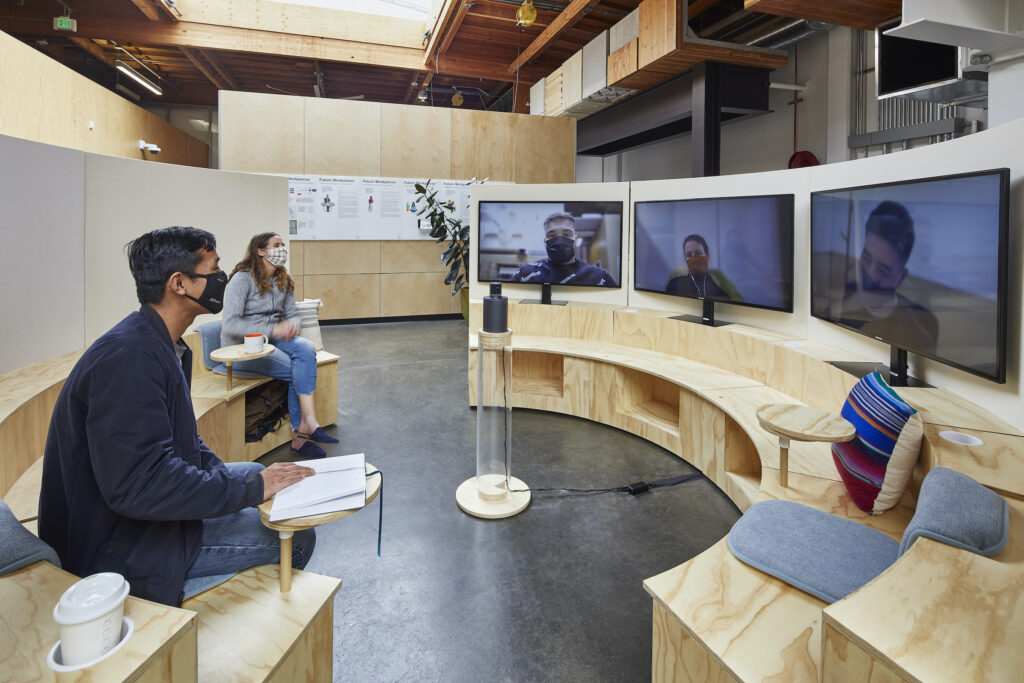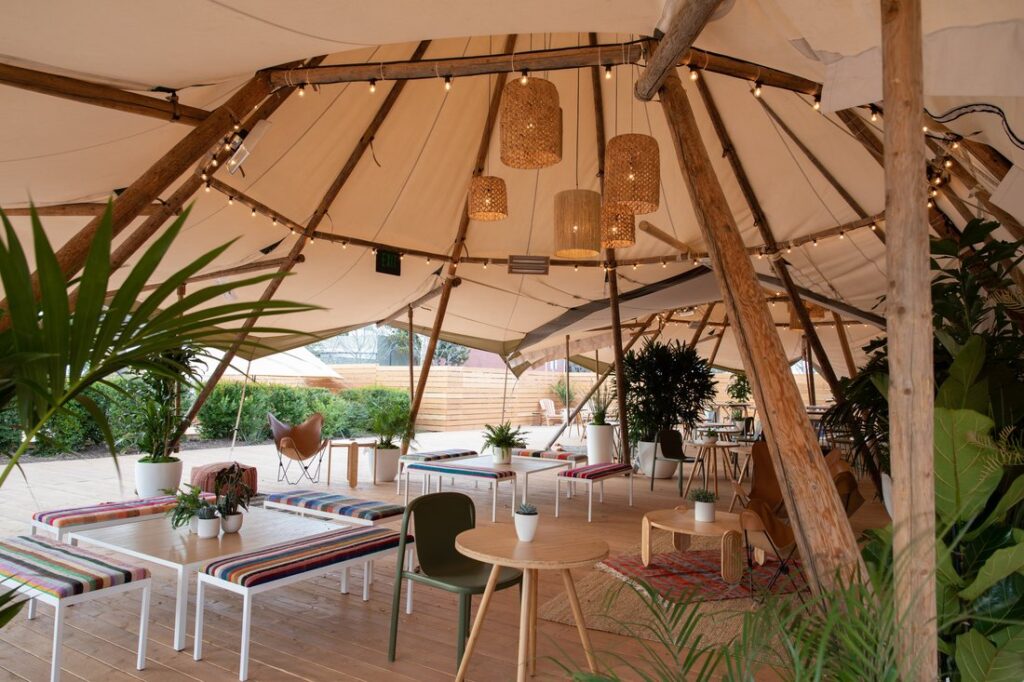 English
EnglishCase Study: How Google handles hybrid working
Like so many other companies, Google is trying to get a handle on how employees will react to so-called hybrid work. The majority of employees are in no hurry to return to the physical workplace. In its annual survey of Google employees, about 70 per cent of the 110,000 employees surveyed said they had a “favourable” opinion of working from home, compared with about 15 per cent who had an “unfavourable” opinion. Another 15 per cent had a “neutral” perspective, according to results viewed by The New York Times. The survey was sent out in February and the results were released at the end of March.
Many employees have now become accustomed to a life without a time-consuming commute, and with more time for family and other aspects of life outside the office. Companies seem to be slowly realising that employees may not be so willing to return to the old life.
Fortunately, Google has some ideas for the post-pandemic office. One of those ideas is to make the workplace happier and more productive.
Google has come a long way.
The first office was a cluttered garage in Silicon Valley, crammed with desks. In 2003, five years after its founding, the company moved to a sprawling campus called the Googleplex. The airy, open offices and creative common areas set a standard for what an innovative workplace could look like. Over the years, the amenities piled up. Food was free, as were buses to and from work: getting to the office, and staying there all day, was easy.
And then.. corona. Throughout 2020 and early 2021, Google employees worked primarily from home. The company learned a lot from this period. Not only did some colleagues find it pleasant not to work at the office, Google was surprised at how productive the employees were. Nonetheless, a few challenges arose. Executives cited the lack of creativity and collaboration, and the difficulty of building a work culture and trust when people were not physically together.
When workers are able to fully return to the office, Google wants to experiment with ways of empowering them by focusing on hybrid working. The aim is to redefine “the office” and paint a new picture of a happier and more productive workplace. Google wants a post-pandemic workplace that accommodates workers who have become accustomed to working from home and no longer want to be in the office all the time.
Three trends
These plans have been built on initiatives that already started before the corona crisis sent Google’s staff home. Back in 2018, the organisation became convinced that the office environment it had at the time was at the end of its rope. Some employees said they had difficulty concentrating in the office because there were too many people as well as distractions. And some of Google’s office complexes were so sprawling that it took people a long time to travel from one building to another. Office work did not work for many people.
Google wondered how they could do better and focused on three trends to create the best possible workplace:
- Work happens everywhere and not only in the office
- What employees need from a workplace is constantly changing;
- Workplaces should be more than desks, meeting rooms and facilities.
How Google defines the future of work
Covid has taken the question about the future of work to the next level. The answer seems to be Ikea and Lego. The key word: flexibility. Instead of rows of desks next to ready-made meeting rooms, Google designs “Team Pods”. Each pod is an empty canvas: chairs, desks, whiteboards and cabinets on wheels can be placed in different configurations and completely rearranged.
The criteria that determine the future of work according to Google:
- Provide more security or the feeling of security by spreading who is at the office at what time, in order to reduce the number of people physically present. Google is thinking ahead to annual flu seasons and possible future pandemics and wants to reduce infection risks. Moreover, lower occupancy levels also benefit concentration.
- Organisations can no longer demand that people come to the office five days a week. Google wants to be able to respond more flexibly to the changing needs of employees: workstations that can be adapted for a particular team or project, personal heating and cooling systems at desks, outdoor meeting rooms in camp themes,
- Companies must be able to cope with a certain mix of external and office workers. For example, Google introduced “Campfire”, a new meeting room where attendees sit in a circle, interspersed with large screens that are impossible to ignore. The screens allow virtual participants to dial in via video conference, who are also visually at the same height as those who are physically present.

- Outdoor workplaces can address concerns about the spread of (future) viruses in traditional offices. For example, at its headquarters in Silicon Valley, where the weather is pleasant most of the year, Google converted a car park into “Camp Charleston” – a fenced-in mix of grass and wooden floors the size of about four tennis courts with Wi-Fi everywhere.


No more rigid elements
Google shows a lot of creativity when it comes to both flexible and useful office design. The walls and the heating and cooling systems are two of the most rigid elements in an office design are and Google is trying to change that:
- A prototype air duct system made of fabric can be attached with zips and moved over a weekend for different seating arrangements.
- As for ending the battle over the temperature at the office: Google is developing a system whereby each chair has its own air diffuser to control the direction or amount of air blowing on it.
- If a meeting requires privacy, a robot comes along and inflates a translucent, cellophane balloon wall to keep prying eyes away.
- Distractions are reduced by leaf-shaped partitions that can be attached to the edge of a desk to reduce glare. An office chair with directional speakers in the headrest plays white noise to muffle nearby noise.
- For those who no longer need a fixed desk, Google also built a prototype of a desk that adapts to an employee’s personal preferences with a swipe of a work badge: it calibrates the height and tilt of the monitor, shows family photos on a display and even adjusts the temperature in the area.
Learning from Google
The company is essentially abandoning the popularised theory of the open office plan – that cramming more workers into smaller spaces and taking away their privacy leads to better collaboration.
Real estate costs for the company are not expected to change much. Although there will be fewer workers in the office, they will need more space for their safety and productivity. This is likely to cost Google billions of dollars, which most companies cannot afford.
However, Google has long been a trendsetter in labour practices and office design. Tech companies like them have helped spread the concept of wide-open office spaces with high ceilings and desks crammed tightly together. If these new ideas of a hybrid office environment prove to be successful, Google can of course inspire other organisations once again.
Source links
Google Blog – A hybrid approach to work
NYTimes – Google’s plan for the future of work
NYTimes – Ikea meets Lego: Google redesigns its office space
ET Telecom – Google has some ideas for the post-pandemic office
Article as originally published on happinessatwork.blog by Griet Deca.


This blog article is linked to “The Cactus Files #4: Workplace trends in a hybrid future”.
If you want to know more about The Cactus Files, check out this article or watch the series on Youtube.

